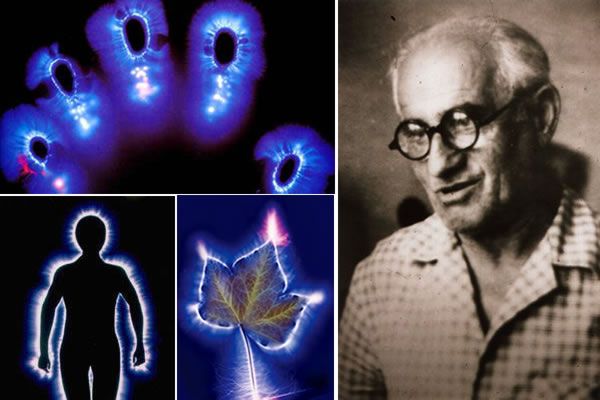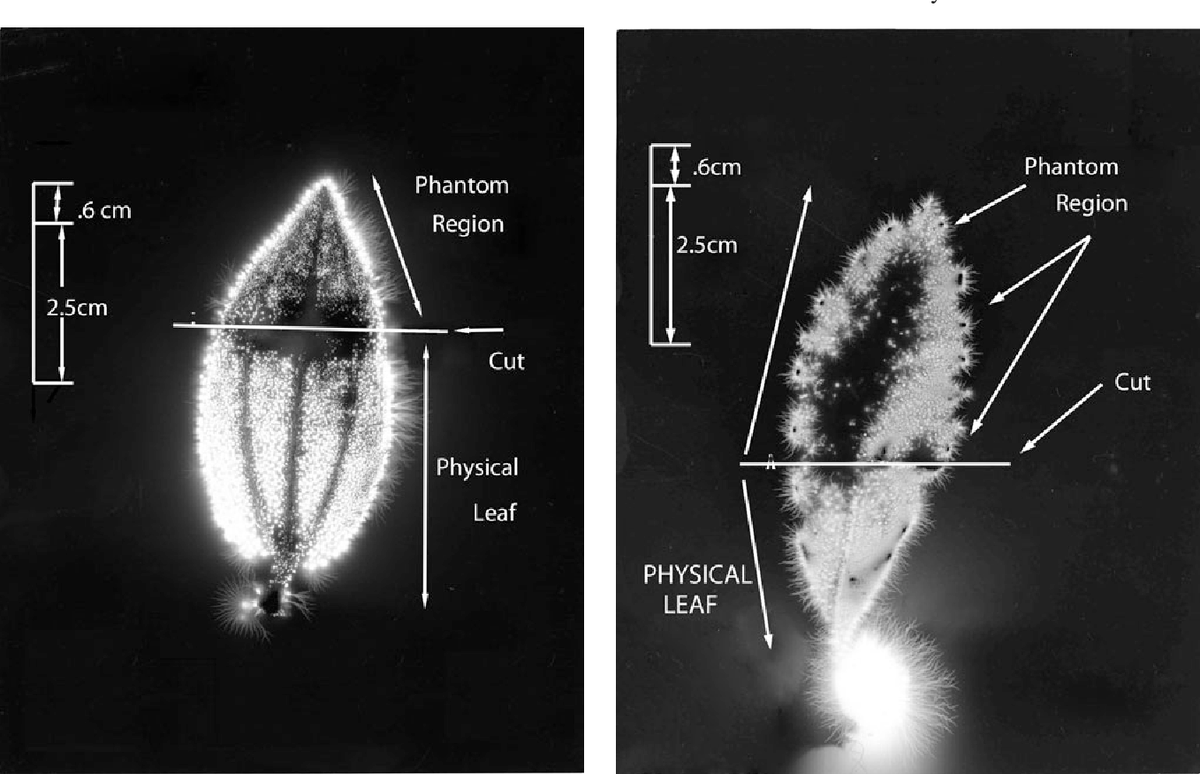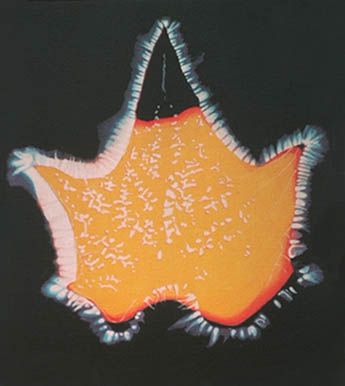RESEARCH
The Phantom Leaf Effect
Source: exo-science.com/phantomleaf.html
Kirlian Photography which is a technique accidentally discovered by the Russian researcher Dr. Semyon Kirlian in 1939. He noticed that if you place an object on a photographic plate, and connect the object to a high-voltage source, an image is produced.
Photos produced from this technique are enigmatic because they allow us to see things which are seemingly contradictory to the way we see the world. The most notable example of this is the Phantom Leaf Effect
When you take a freshly cut leaf from a tree, and you tear off a part of it, and take a Kirlian photo of it. You can still see the part of the leaf you removed!
You need to take the photo within minutes of cutting the leaf, and the leaf must be fresh, healthy and full of life. But even then, this phenomenon only occurs sometimes: Successful replication rate is between 1% and 70% depending on the researcher.
Back in the day in Russia, Kirlian photography was used medically, as a diagnosis tool. It was a said that it could also predict health problems before they manifested.
More than 80% of amputees experience sensations from their amputated limb, even though it doesn't exist anymore. Common feelings are itching and pain. The commonly accepted explanation is that exposed nerve endings are being stimulated.
This is an unsatisfying explanation since a phantom limb can be felt decades after it was lost, long after the nerve endings have healed.
There are at least two accounts of people who have seen the phantom leaf effect in amputated humans when photographed, both remarking that it was only possible to photograph during the phantom pain.



